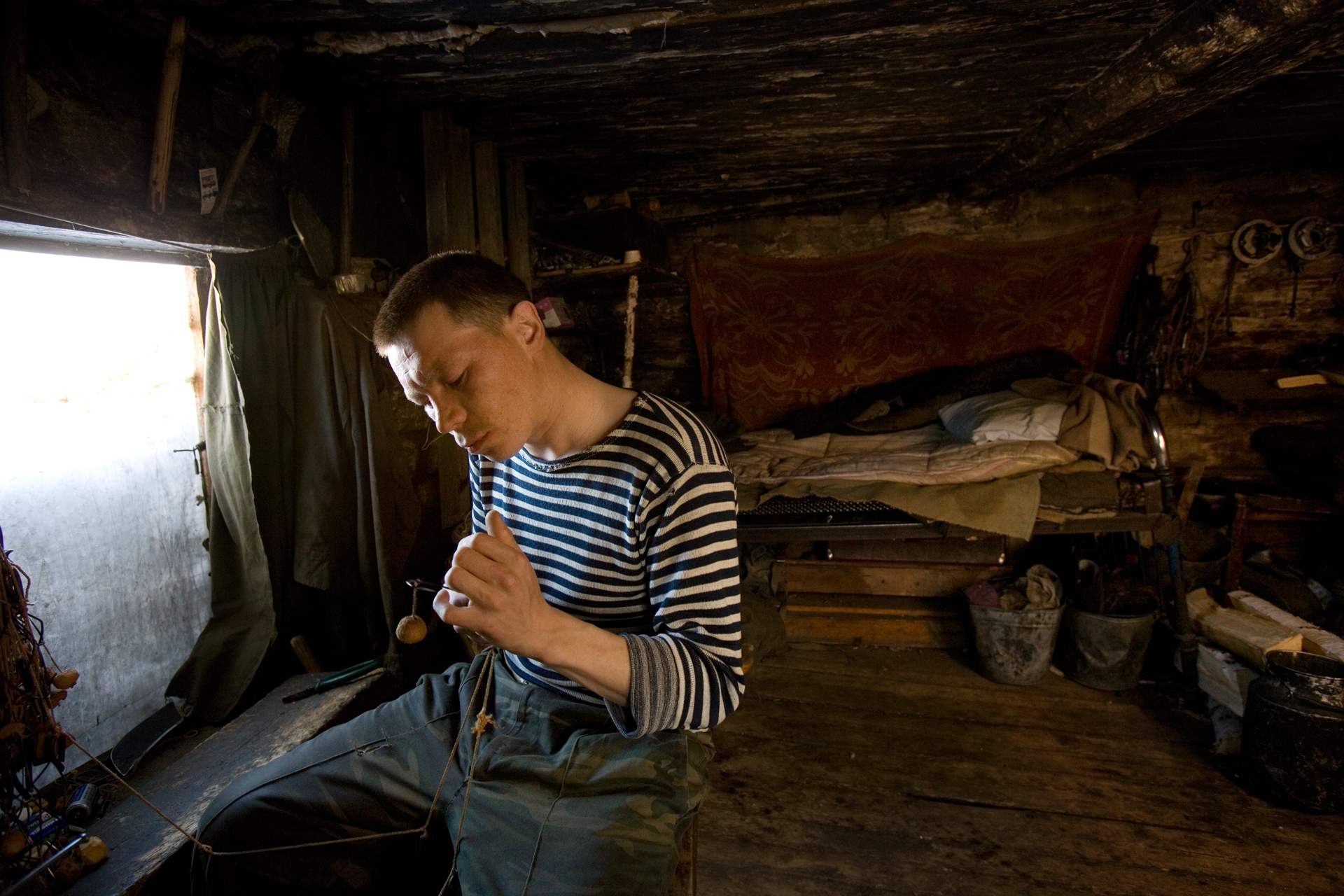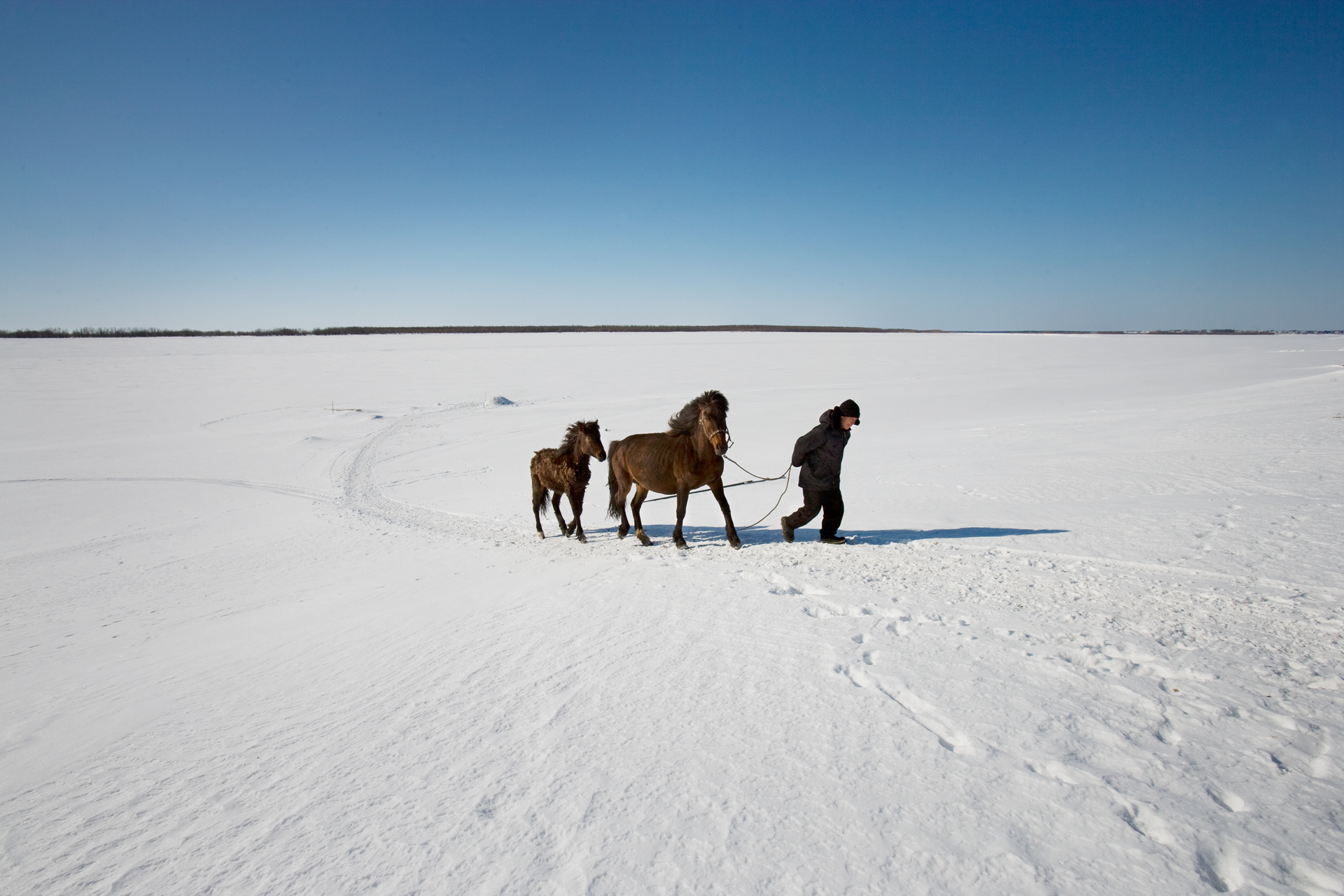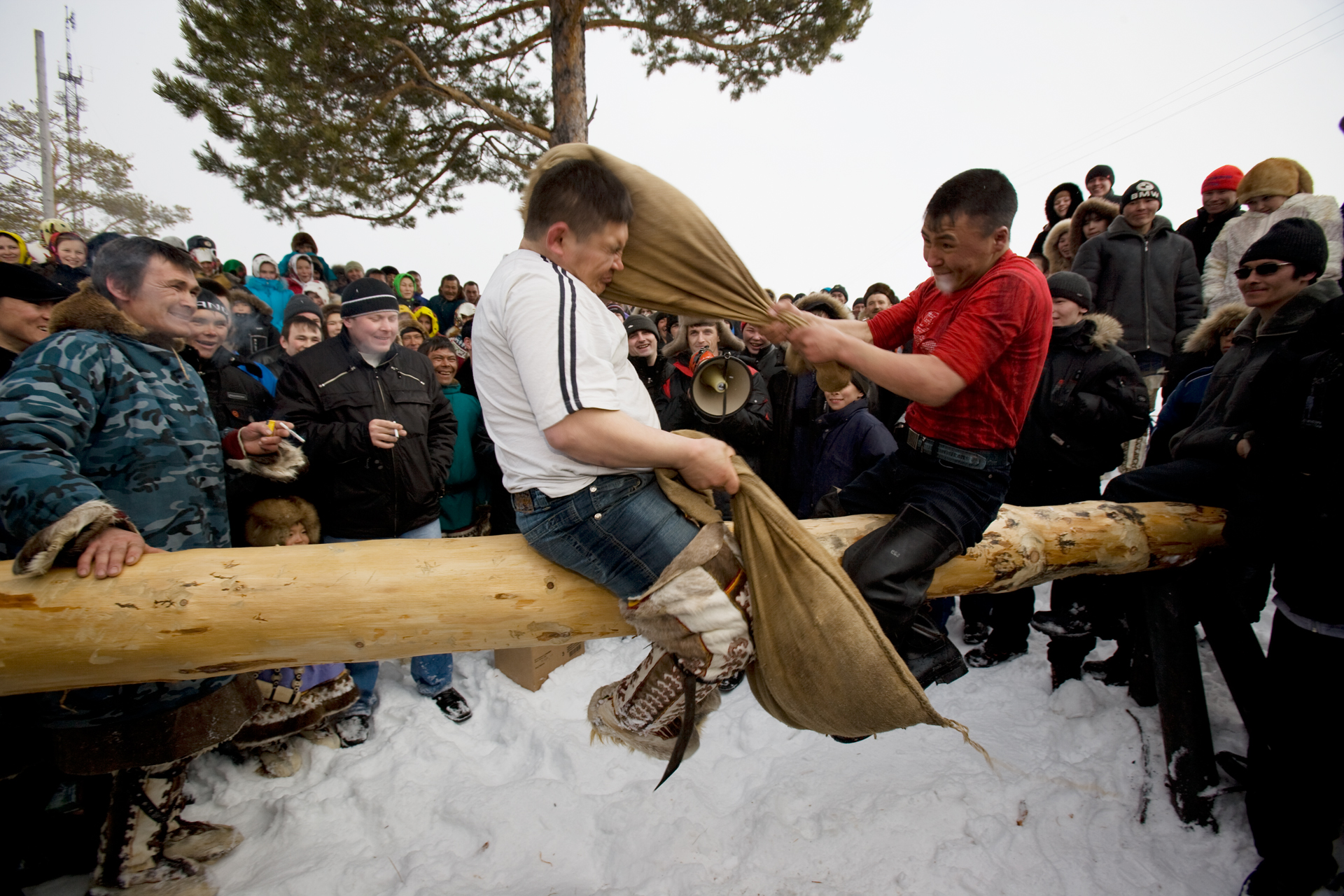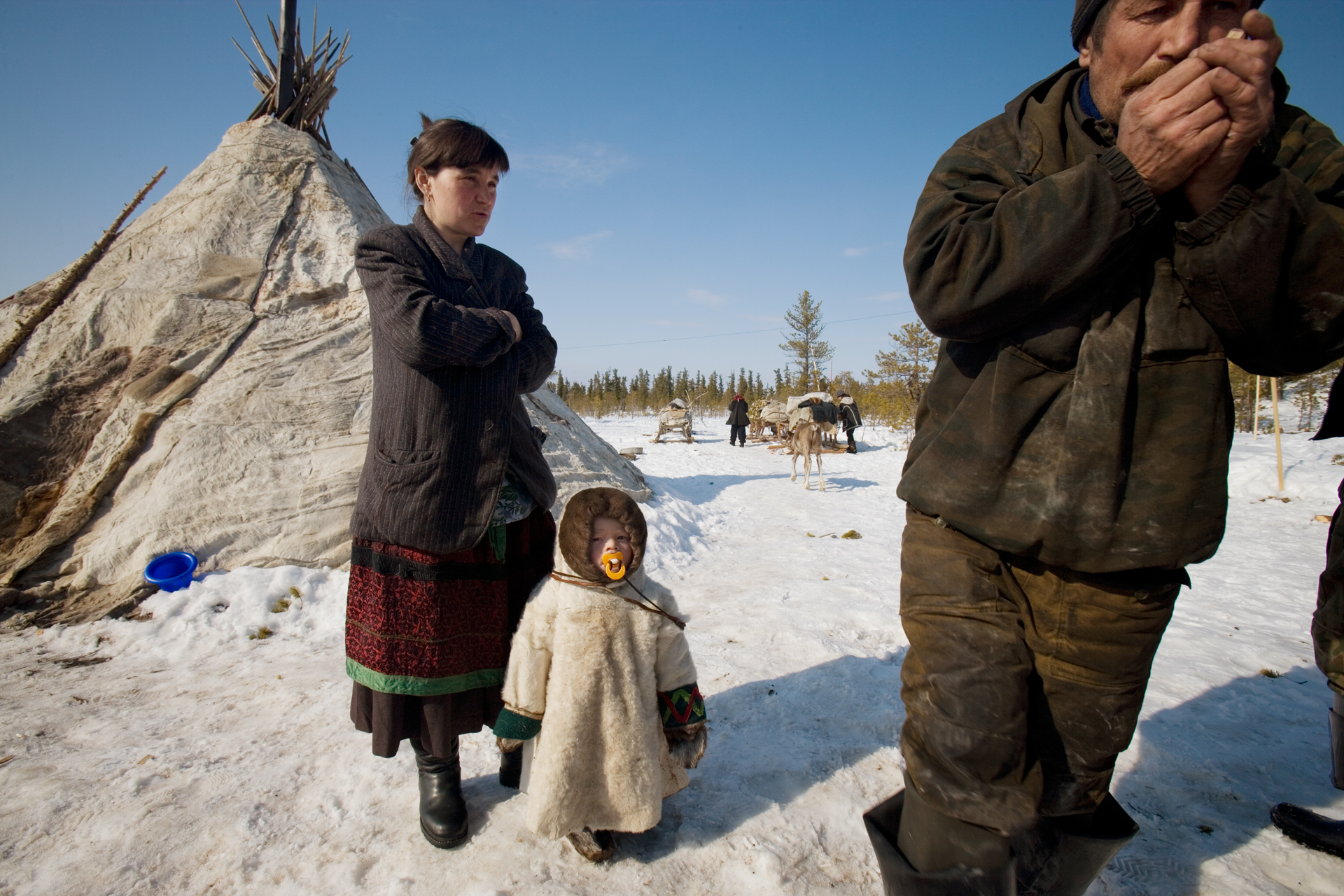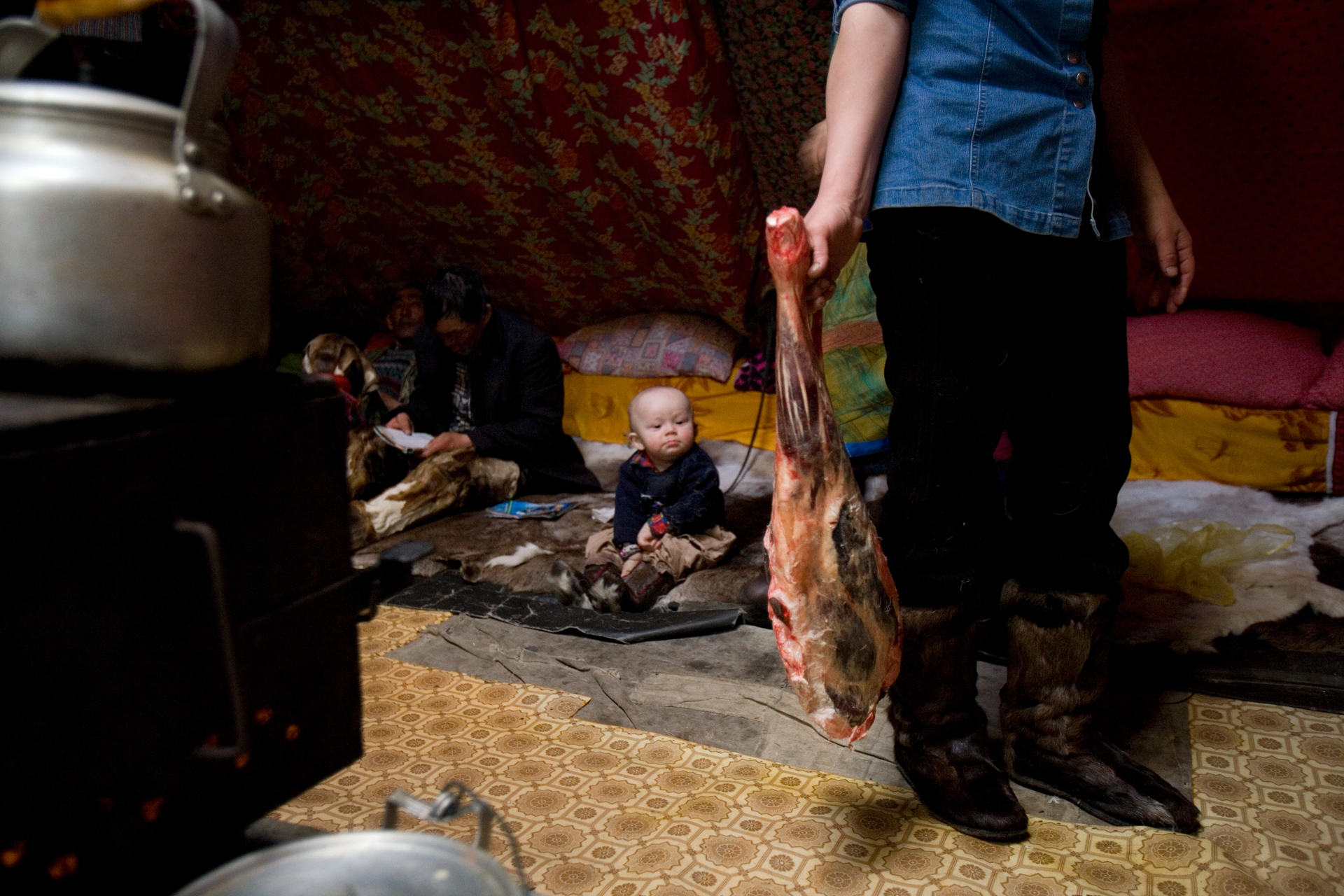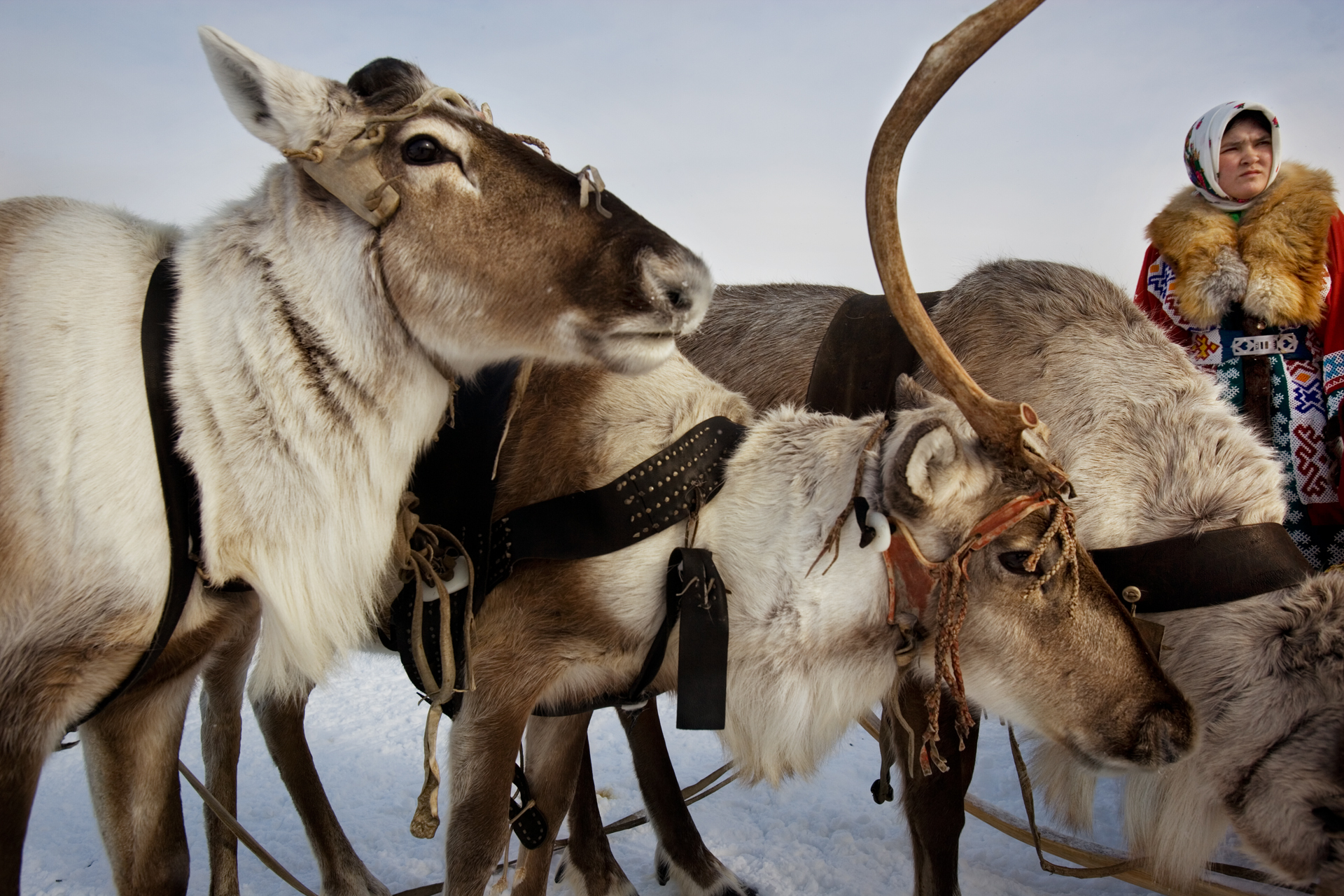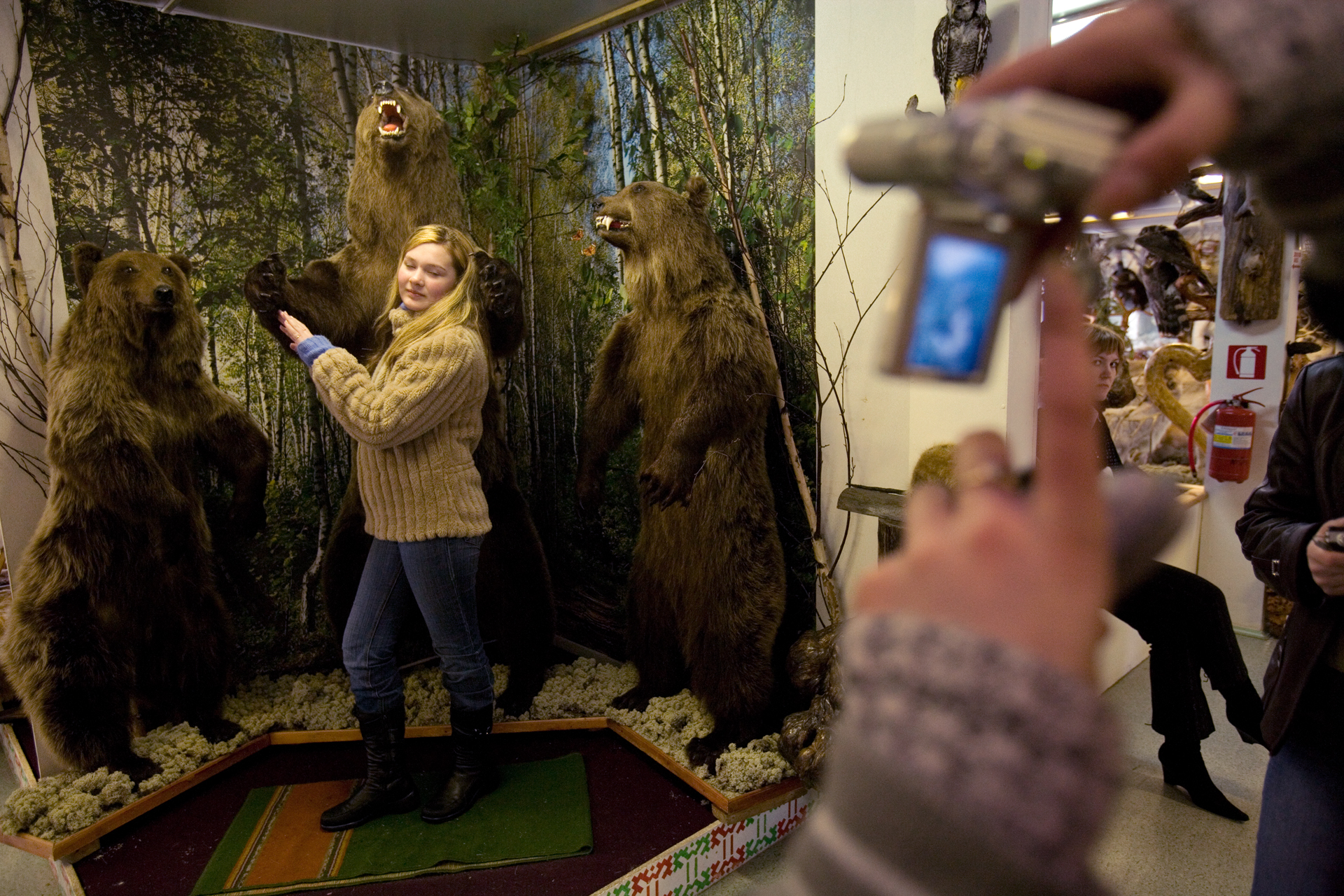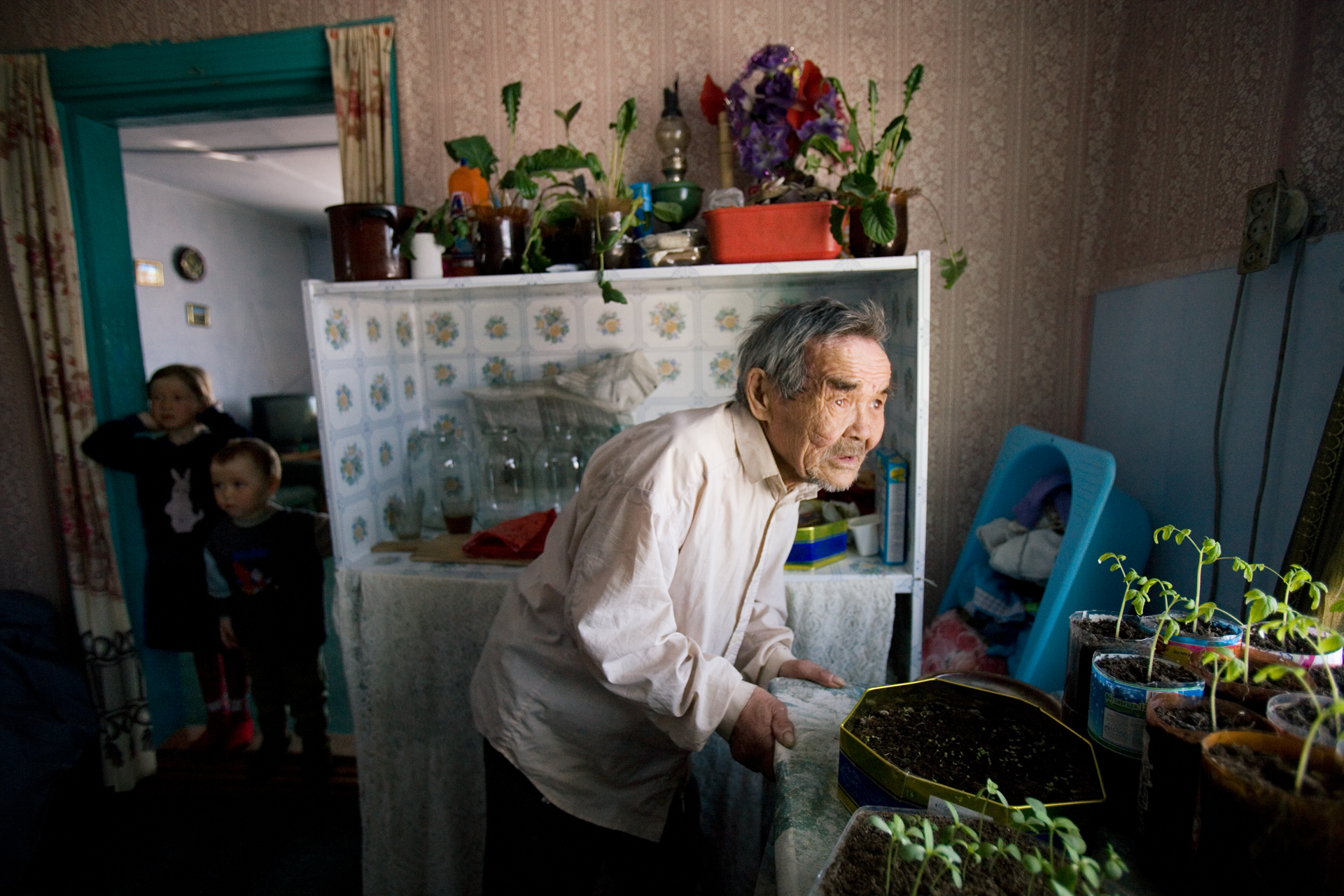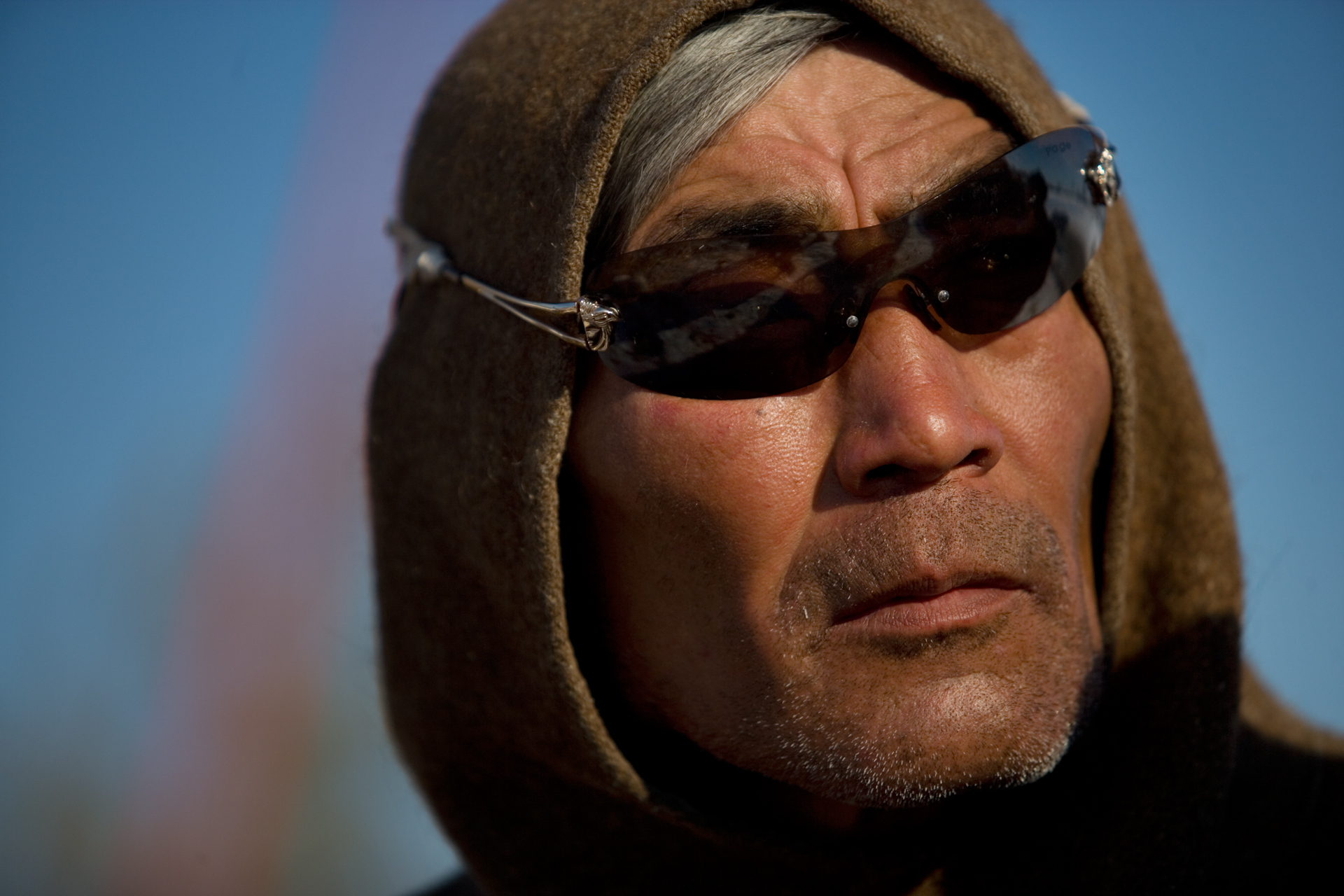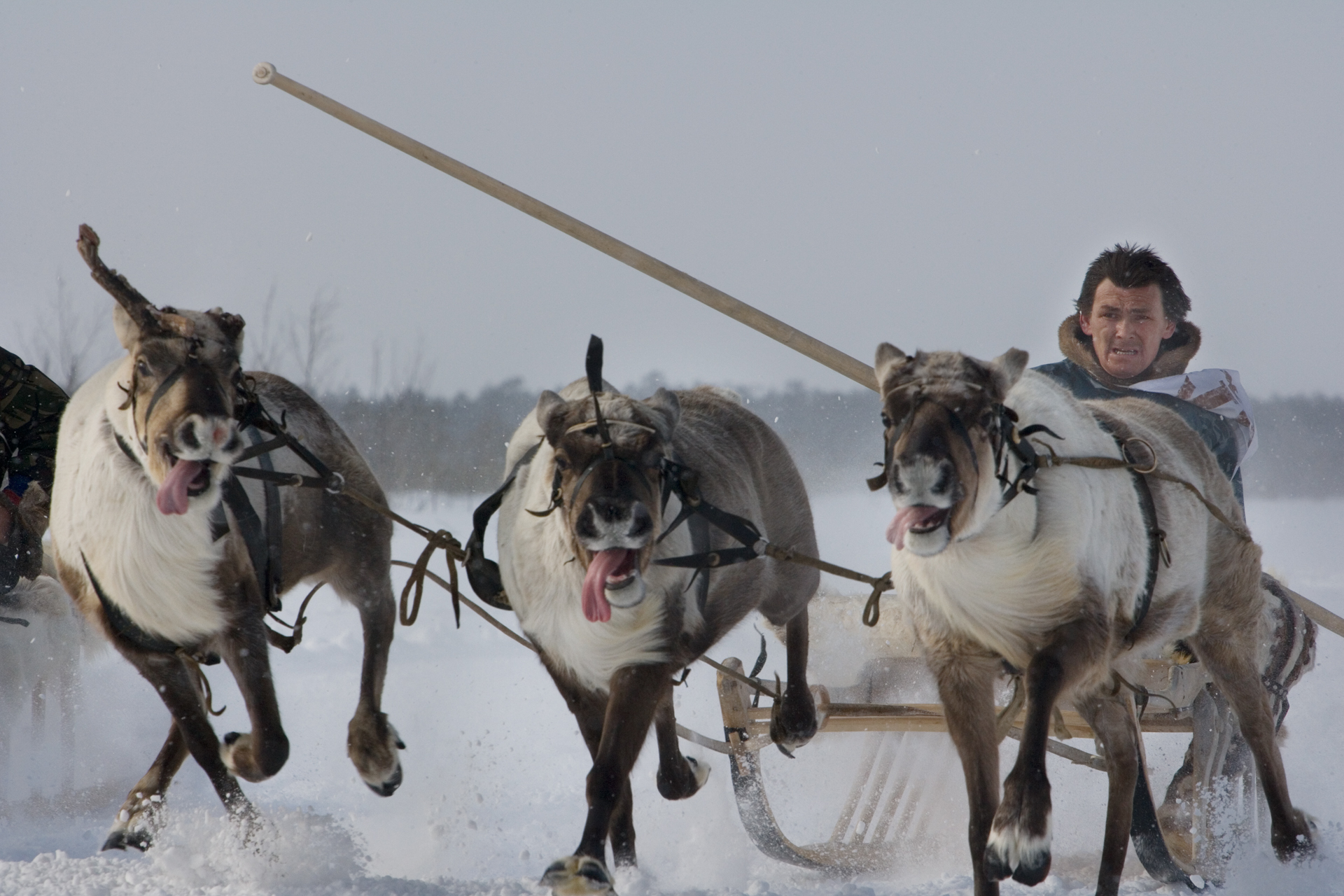The expansive modernization and economic growth generated by Russia’s oil and gas industry have been a blessing for most of the Khanty-Mansiysk region’s 1.5 million inhabitants, but not all. Roughly 30,000 indigenous people hailing from the area’s Khanty and Mansi tribes still populate the region, but their traditional way of life is quickly disappearing.
With the collapse of the former Soviet Union, the region’s indigenous nomads were awarded legal status as “aboriginal people” – making them free to roam ancestral lands, now covered by oil fields and oil and gas refineries. The natural resources that support indigenous life are in peril; those groups dependent on fishing and hunting are competing with an influx of ethnic Russians now resettling in the new Siberian frontier who also fish and hunt for food, but also for sport. Reindeer herders have faired a bit better for many daily life still includes traditional transportation (reindeer yoke), dwellings (chums), clothing, household implements and food. Still, only 2,500, less than 10% of the indigenous population, live according to their customs in the Khanty-Mansiysk region. Younger generations drawn to new urban opportunities contribute to the acculturation that’s extinguishing native languages and preservation of Siberia’s indigenous cultural heritage. Soon, even more may be lured to new technologies used by the powerful oil companies.
Local governments have taken the conservation of Siberia’s indigenous culture to heart; the Khanty-Mansiysk region was among the first to establish a special department for indigenous peoples in the legislative and executive branches of that region. While well intentioned, its power is limited; municipal legislation to protect indigenous land rights is not likely to deter multinational corporations funding big oil the source of Russia’s new capital.


